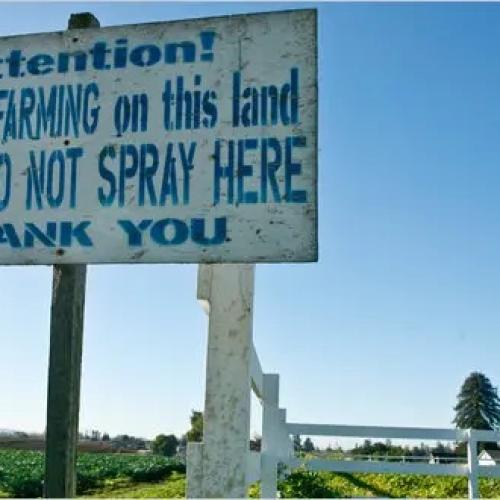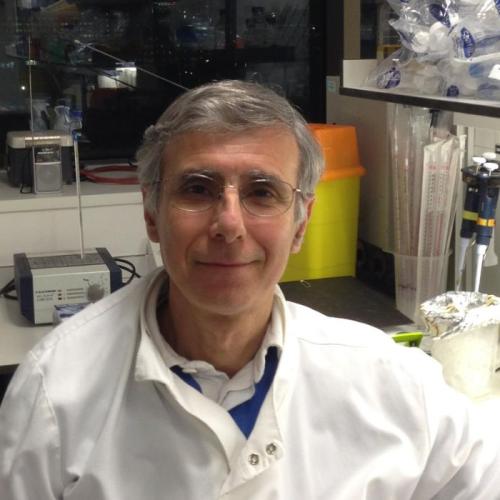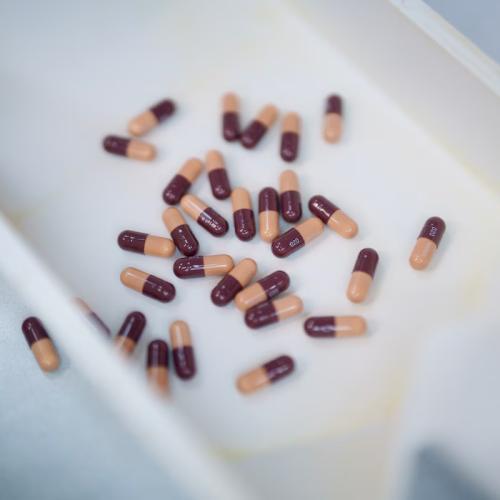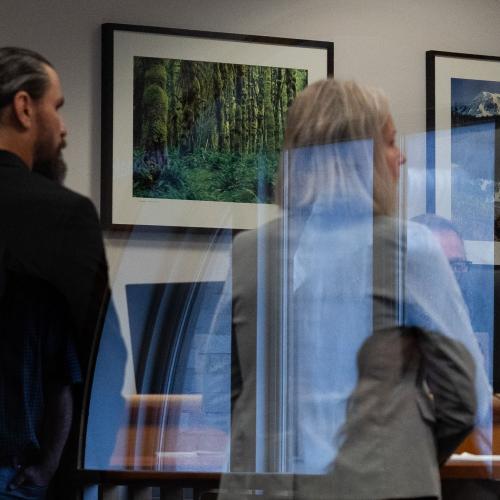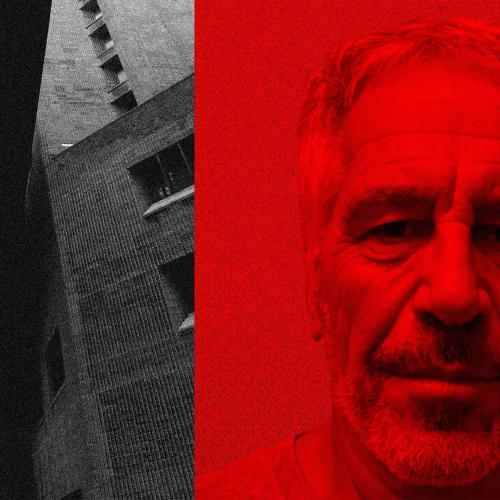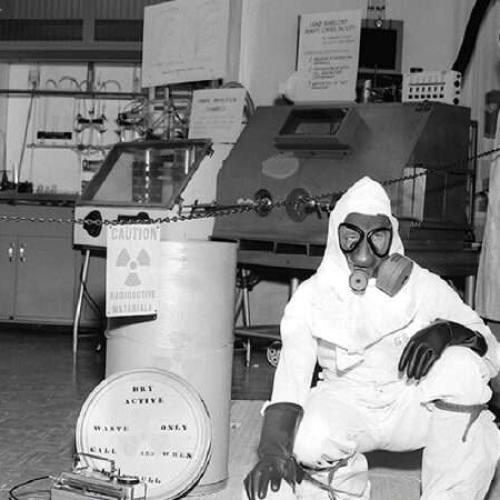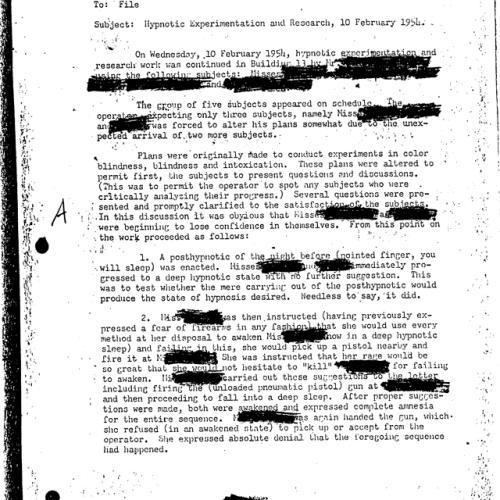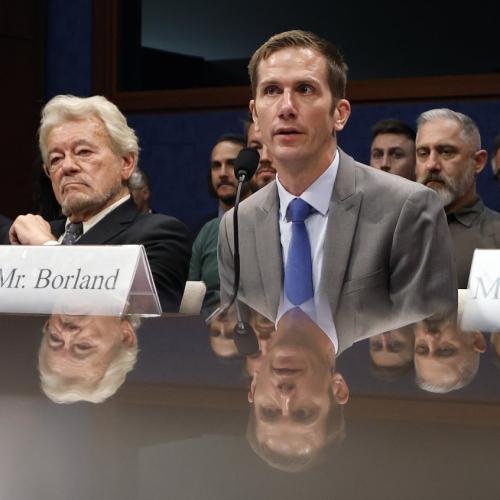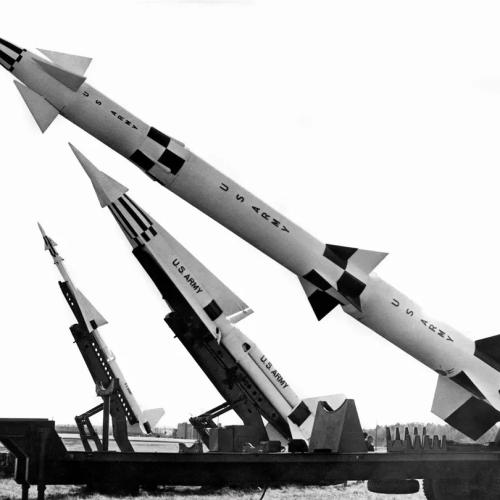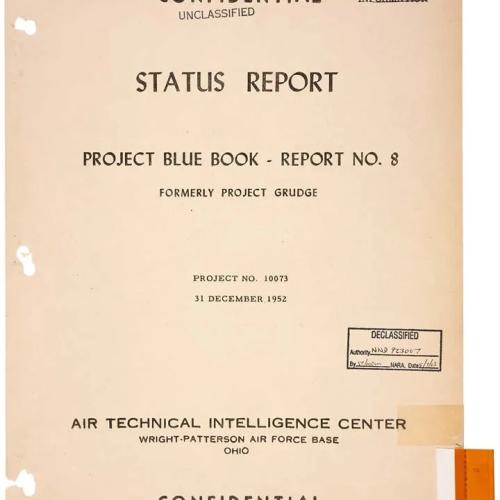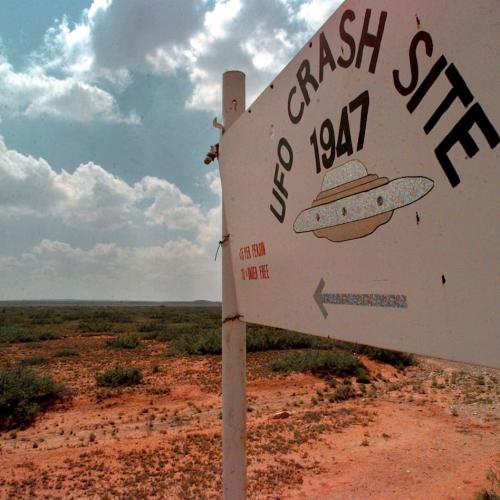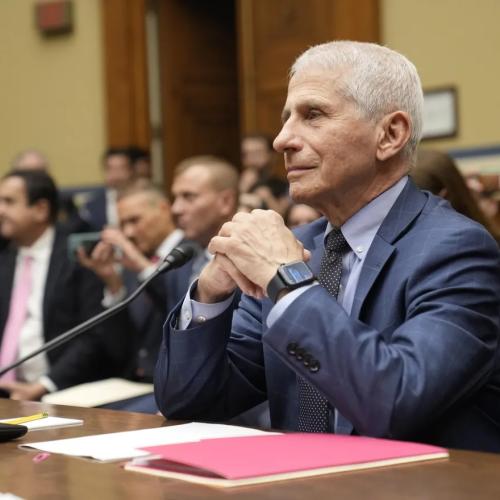Energy Inventions News Articles
Below are key excerpts of revealing news articles on energy inventions from reliable news media sources. If any link fails to function, a paywall blocks full access, or the article is no longer available, try these digital tools.
For further exploration, delve into our Energy Information Center.
Gerald Rowley keeps his dreams in his garage. There ... he stores an aging Mazda 626 sedan [specially outfitted with a] one-gallon steel box in the trunk connected to fuel lines leading to a gasoline vaporizing device under the hood. The steel box holds one gallon of regular unleaded gasoline. The device beneath the hood is called the VFS, Vaporizing Fuel System. I came here to drive Rowley's VFS-equipped car. For years, I had spurned the invitations of homespun inventors worldwide to travel to distant points to witness first-hand machines that could deliver 100 miles per gallon or 200 miles per gallon. The claims sounded too incredible to believe -- ridiculous, in fact. If such devices really worked, really did what their inventors said they did, why would they still be sitting on shelves in anonymous workshops -- ignored by the driving public and all of the vehicle manufacturers who serve them? What automobile manufacturer in its right mind, especially with rising concerns about future oil availability and with gasoline prices escalating worldwide, would not jump at the opportunity to acquire a device that delivered 100 miles per gallon? Rowley's patented device is nothing new. It's just the latest iteration of an idea already developed by others -- the notion that you could get more miles per gallon out of a traditional gasoline engine if you pre-heated the fuel to about 350 degrees Fahrenheit, thus turning it into a vapor before it enters the combustion chamber. Vaporized fuel, when properly mixed with air, burns more efficiently, saves fuel and emits fewer tailpipe pollutants than traditional fuel-air mixtures in which gasoline is sprayed into a combustion chamber in tiny droplets and then mixed with air before burning. All car companies know this.
Note: Why won't the car manufacturers develop this amazing, proven technology? For a possible answer, click here. And for a treasure trove of exciting reports on new energy developments, click here.
Carmakers such as Toyota and Honda can't seem to make hybrid vehicles fast enough to keep up with public interest. Interest in this new technology is growing, and one group is highlighting these technical marvels in a yearly event called the Tour de Sol. Top prize for the Monte-Carlo Rally went to a modified Honda Insight driven by Brian Hardegen, of Pepperell, who broke the 100-mile-per-gallon barrier over a 150-mile range. The car actually got 107 miles-per gallon. St. Mark's High School in Southboro, and North Haven Community School, North Haven, ME, demonstrated true zero-oil consumption and true zero climate-change emissions with their modified electric Ford pick-up and Volkswagen bus. More than 60 hybrid, electric and biofueled vehicles from throughout the US and Canada demonstrated that we have the technology today to power our transportation system with zero-oil consumption and zero climate-change emissions.
Note: If the above link fails, click here. If high school students can do it, why aren't the car companies seriously developing these technologies? And why are car manufacturers not able to keep up with demand on hybrid vehicles? For more, click here.
Peter Hagelstein is trying to revive hope for a future of clean, inexhaustible, inexpensive energy. Fifteen years after the scientific embarrassment of the century ... a panel of scientists gathered. The panel's charge was simple: to determine whether [cold fusion] had even a prayer of a chance at working. The Department of Energy went to great lengths to cloak the meeting from public view. No announcement, no reporters. None of the names of the people attending that day was disclosed. Since 1989, hundreds of scientists working in dozens of labs around the world have claimed ... results. Supporters point to the written literature -- more than 3,000 papers -- as proof of the effect. But the most credible cold fusion advocates concede that the vast majority of those papers are of poor quality. "Brilliant," "genius" and "reclusive" were words used to describe [SRI scientist Peter] Hagelstein 20 years ago, when he rose to prominence as one of the young scientists behind President Ronald Reagan's plans to build a missile shield in outer space. Hagelstein [now] describes the mainstream scientific community as "mafias" that promote and publish their friends' work, unwilling to accept new ideas. As Hagelstein explains it, leading physicists came out swiftly and prematurely against cold fusion. Hagelstein says his acceptance of cold fusion was by no means immediate. It took several years before he was convinced. [Now] Hagelstein says, he has seen enough cold fusion data to convince him that the science is clearly real. The field's acceptance, he maintains, will be simply a matter of the scientific community's looking at the improved experimental results in the future and coming to understand them.
Note: If the above link fails, click here. Why all the secrecy around this important topic? To learn why the power elite don't want cheap energy, click here.
Inventors who are mixing water with fuel to power engines say they're onto something big. German-born inventor Rudolf Gunnerman [believes] that one of the world's most common compounds - good old tap water - can be blended with fuel to power your car, truck or lawn mower. Gunnerman claims to have devised a means to blend water with naphtha in order to power engines in a cleaner, cheaper, more efficient way. "New ideas and better ideas are not necessarily found by universities or by large companies. New ideas and better ideas are found by people who look for them," says Gunnerman, 68. "Caterpillar" is the single word that brings a degree of credibility to Gunnerman's claims. The Peoria, Ill.-based heavy- equipment manufacturer entered a joint venture with Gunnerman in July 1994. Together, under the name Advanced Fuels, they've conducted experimental uses of the A-21 fuel - made up of 70 percent naphtha, a crude-oil byproduct, and 30 percent water. And now, Paccar Inc. is throwing its trucking weight in Gunnerman's corner. The Bellevue-based manufacturer of Kenworth and Peterbilt trucks recently sent a truck to Peoria for testing with the A-21 fuel. Paccar changed out the engine to add a Caterpillar engine and modified the cylinders and fuel injectors to handle more fluid volume. They also did a series of baseline tests of noise, cooling, drivability and fuel economy, said Jim Reichman, Paccar's technology-development manager. Back at Paccar's Mount Vernon technical center, Reichman is enthused. "We're pretty pleased with it," he said.
Note: For key reports from reliable sources on new energy developments, click here.
It seems too good to be true, but rigorous tests under way in Nevada, California and Illinois show a breakthrough fuel that is more than half tap water could power the nation's vehicles, trains and gas-powered aircraft by century's end. The milky fuel was developed by Reno inventor Rudolf Gunnerman and is being pushed through the federal fuels-testing labyrinth by Gunnerman and diesel giant Caterpillar Inc. It has passed every test thrown at it. In virtually all categories, it tops conventional gasoline and diesel as a clean, cheap and safe fuel that can be used in almost any combustion engine. If it works -- and disinterested outsiders who have tested it say it may -- drivers could see the price of gasoline cut more than half. "Everybody said it cannot work, that I'm a fraud,'' the German-born inventor said. No one's laughing now: Nevada last November certified the water-based fuel as a "clean alternative fuel,'' meaning it can be used to meet federal mandates requiring clean fuels in fleets and other vehicles. The Energy Department is awaiting test data from trials run by Caterpillar before passing judgment. If DOE reaches the same conclusion as Nevada, Gunnerman's concoction could be used as a clean fuel in all states.
Note: If the above link fails, click here. Why didn't this exciting development make headline news? For lots more showing very promising results on this most intriguing invention, click here. For exciting reports from reliable sources on highly promising new energy developments and technologies, click here and here.
Nikola Tesla, one of the truly great inventors [says] that he stands ready to divulge to the United States government the secret of his "teleforce," of which he said, "airplane motors would be melted at a distance of 250 miles, so that an invisible 'Chinese Wall of Defense' would be built around the country against any enemy attack by an enemy air force, no matter how large." This "teleforce" ... would operate through a beam one-hundred-millionth of a square centimeter in diameter, and could be generated from special plant that would cost no more then $2,000,000 and would take only about three months to construct. A dozen such plants, located at strategic points along the coast, according to Mr. Tesla, would be enough to defend the country against all aerial attack. The beam would melt any engine, whether diesel or gasoline driven, and would also ignite the explosives aboard any bomber. No possible defense against it could be devised, he asserts, as the beam would be all-penetrating. The beam [would involve] a new method for producing "a tremendous repelling electrical force." This would be the projector, or the gun of the system. The voltage for propelling the beam to its objective, according to the inventor, will attain a potential of 80,000,000 volts. With this enormous voltage, he said, microscopic electrical particles of matter will be catapulted on their mission of defensive destruction.
Note: If you are unable to access this article at the link above, you can also find it at this link. The technology Tesla was exploring here may well have been used in the currently functioning HAARP facilities, which some researchers believe are being used to manipulate weather and more. For an abundance of reliable information on HAARP, click here. For an amazing 35-page autobiography by Tesla himself, click here.
Nikola Tesla (pronounced Teshlah) [invented] the Tesla induction motor which made alternating current practical, and the Tesla transformer which steps up oscillating currents to high potentials. Last week was Dr. Tesla's 75th birthday. To Nikola Tesla, all the world's a power house. For 40 years he has been reasoning, calculating and arguing that the earth has a definite electrical resonance. All that men need do to have unlimited power at their command, and that power without the necessity of transmission wires, would be to generate electricity in tune with the earth's. Only possible drawbacks would be the vast expense of installation ... and anyone could tap the current. There could be no financial control of electricity. In Colorado in 1899, Tesla built a huge induction coil by which he generated and, he says, sent out wireless waves the same year Marconi established wireless communication. Tesla claims priority, because he conceived his system six years earlier, in 1893. The theoretical path of Tesla's waves were through the earth, not through the air as Hertzian waves go. [Tesla has commented] "I think that nothing can be more important than interplanetary communication. It will certainly come some day, and the certitude that there are other human beings in the universe, working, suffering, struggling, like ourselves, will produce a magic effect on mankind and will form the foundation of a universal brotherhood that will last as long as humanity itself." Dr. Tesla migrated to the U. S. in 1884 to work for Thomas Alva Edison, whom he soon quit. His naturalization papers he keeps in a safety box, his scientific medals and degrees in old trunks and cupboards.
Note: The above link requires a small payment. To view the full article free, click here. Though Marconi gets major mention in the history books while Tesla is given but a footnote, the U.S. Supreme Court in 1943 "ruled that that Tesla's radio patents had predated those of [Marconi]," as stated in this Chicago Tribune article. There are many intriguing secrets about this mysterious genius. To learn how the government seized his work immediately after his death and lots more, click here. For other verifiable information on incredible new energy inventions based on Tesla technology and more, click here.
Nikola Tesla, the inventor, winner of the 1915 Nobel Physics Prize, has filed patent applications on the essential parts of a machine ... which he says will render fruitless any military expedition against a country which possesses it. The destructive invention will go through space with a speed of 300 miles a second, [a] manless airship without propelling engine or wings, sent by electricity to any desired point on the globe on its errand of destruction, if destruction its manipulator wishes to effect. Ten miles or a thousand miles, it will be all the same to the machine, the inventor says. Straight to the point, on land or on sea, it will be able to go with precision, delivering a blow that will paralyze or kill, as is desired. A man in a tower on Long Island could shield New York against ships or army by working a lever, if the inventor's anticipations become realizations. "It is perfectly practicable to transmit electrical energy without wires and produce destructive effects at a distance. I have already constructed a wireless transmitter which makes this possible, and have described it in my technical publications. With transmitters of this kind we are enabled to project electrical energy in any amount to any distance and apply it for innumerable purposes, both in peace and war. The art is already so far developed that great destructive effects can be produced at any point on the globe, determined beforehand and with great accuracy." Dr. Tesla then said that it would be possible with his wireless mechanism to direct an ordinary aeroplane, manless, to any point over a ship or an army, and to discharge explosives of great strength from the base of operations.
Note: If you are unable to access this article at the link above, you can also find it at this link or this one. Some believe that this amazing technology was developed and then kept secret for reasons of national security. The technology Tesla was exploring here could have played a part in the secretive HAARP facilities, which some researchers believe are being used to manipulate weather and more. For an abundance of reliable information on HAARP, click here. For an amazing 35-page autobiography by Tesla himself, click here.
Researchers have developed a solar paint that can absorb water vapour and split it to generate hydrogen - the cleanest source of energy. The paint contains a newly developed compound that acts like silica gel, which is used in sachets to absorb moisture and keep food, medicines and electronics fresh and dry. But unlike silica gel, the new material, synthetic molybdenum-sulphide, also acts as a semi-conductor and catalyses the splitting of water atoms into hydrogen and oxygen. Lead researcher Dr Torben Daeneke, from RMIT University in Melbourne, Australia, said: "We found that mixing the compound with titanium oxide particles leads to a sunlight-absorbing paint that produces hydrogen fuel from solar energy and moist air. "Titanium oxide is the white pigment that is already commonly used in wall paint, meaning that the simple addition of the new material can convert a brick wall into energy harvesting and fuel production real estate. "Our new development has a big range of advantages," he said. "There's no need for clean or filtered water to feed the system. Any place that has water vapour in the air ... can produce fuel." His colleague ... Kourosh Kalantar-zadeh, said hydrogen was the cleanest source of energy and could be used in fuel cells as well as conventional combustion engines as an alternative to fossil fuels. "This system can also be used in very dry but hot climates near oceans. The sea water is evaporated by the hot sunlight and the vapour can then be absorbed to produce fuel.
Note: Explore a treasure trove of concise summaries of incredibly inspiring news articles which will inspire you to make a difference.
For nearly 100 years, scientists have dreamed of turning the lightest of all the elements, hydrogen, into a metal. Now, in a stunning act of modern-day alchemy, scientists at Harvard University have finally succeeded in creating a tiny amount of [this] material. Metallic hydrogen could theoretically revolutionise technology, enabling the creation of super-fast computers, high-speed levitating trains and ultra-efficient vehicles and dramatically improving almost anything involving electricity. But the prospect of this bright future could be at risk if the scientists next step to establish whether the metal is stable at normal pressures and temperatures fails to go as hoped. Professor Isaac Silvera, who made the breakthrough with Dr Ranga Dias, said: This is the holy grail of high-pressure physics. It's the first-ever sample of metallic hydrogen on Earth, so when you're looking at it, you're looking at something thats never existed before. At the moment the tiny piece of metal can only be seen through two diamonds that were used to crush liquid hydrogen at a temperature far below freezing. The amount of pressure needed was immense more than is found at the centre of the Earth. Sometime in the next few weeks, the researchers plan to carefully ease the pressure. According to one theory, metallic hydrogen will be stable at room temperature. If this is true, then [it] could ... transform humanitys efforts to explore our solar system by providing a form of rocket fuel nearly four times more powerful than the best available today.
Note: For more along these lines, see concise summaries of deeply revealing breakthrough energy invention news articles from reliable major media sources.
Researchers at the Oak Ridge National Laboratory, a Department of Energy lab in Tennessee, have discovered a mechanism for converting carbon dioxide into ethanol. Their method takes advantage of nanotechnology, creating a catalyst that produces ethanol from a solution of carbon dioxide in water. We discovered somewhat by accident that this material worked, said Adam Rondinone, the lead author of a new study in the journal ChemistrySelect. We were trying to study the first step of a proposed reaction when we realized that the catalyst was doing the entire reaction on its own. The discovery may change the way we think about carbon dioxide. If it could be captured and turned into a fuel, then carbon dioxide the earth-polluting byproduct of global dependence on fossil fuels could help high-energy societies work toward energy independence. Repurposing carbon dioxide could be invaluable for the environment, the researchers say. Converting it into ethanol can turn a greenhouse gas into a gasoline-like fuel source. Ethanol contains one-third less energy than gasoline but produces far fewer byproducts when burned in engines, which can limit further carbon emissions. Closing the carbon cycle by utilizing CO2 as a feedstock for currently used commodities, in order to displace a fossil feedstock, is an appropriate intermediate step towards a carbon-free future, the researchers wrote in the study.
Note: Explore a treasure trove of concise summaries of incredibly inspiring news articles which will inspire you to make a difference.
Researchers from the Harvard John A. Paulson School of Engineering and Applied Sciences (SEAS) have developed a new flow battery that stores energy in organic molecules dissolved in neutral pH water. This new chemistry allows for a non-toxic, non-corrosive battery with an exceptionally long lifetime and offers the potential to significantly decrease the costs of production. Flow batteries store energy in liquid solutions in external tanks - the bigger the tanks, the more energy they store. Flow batteries are a promising storage solution for renewable, intermittent energy like wind and solar but todays flow batteries often suffer degraded energy storage capacity after many charge-discharge cycles. The Harvard team was able to engineer a battery that loses only one percent of its capacity per 1000 cycles. Lithium ion batteries dont even survive 1000 complete charge/discharge cycles, said [researcher Michael] Aziz. Because we were able to dissolve the electrolytes in neutral water, this is a long-lasting battery that you could put in your basement, said [researcher Roy] Gordon. If it spilled on the floor, it wouldnt eat the concrete and since the medium is noncorrosive, you can use cheaper materials to build the components of the batteries, like the tanks and pumps. The Department of Energy (DOE) has set a goal of building a battery that can store energy for less than $100 per kilowatt-hour. If you can get anywhere near this cost target then you change the world, said Aziz.
Note: For more along these lines, see concise summaries of deeply revealing energy innovation news articles from reliable major media sources.
A revolution of sorts is brewing in the clean energy field, with the emergence of fusion and "low energy nuclear reaction" (LENR) energy. These processes, unlike fission reactions used in conventional nuclear reactors, need not emit dangerous radiation, nor do they produce radioactive byproducts. The fuel is plentiful and free. One pioneer in LENR is Andrea Rossi, an Italian-American inventor-entrepreneur ... who recently formed a venture to commercially market systems based on an LENR process he has developed. Many are understandably skeptical of Rossi's claims; yet he reports that he has a full-scale working prototype, delivering 1 MWatt continuous net output power, which is already seven months into a one-year acceptance test at a commercial client's site. Several observers have seen the system in operation, and have reported that it is working as claimed. On 25 August 2015, the U.S. Patent Office awarded Rossi a patent for his process. Given the potential importance of these developments, scientifically, economically and environmentally, we have been following progress in this area in earlier Huffington Post articles (HP#1) and (HP#2). "We foresee applications for central heating of commercial buildings, heat production for industrial processes and electric power generation. My dream is for domestic heat and power generation," [said Rossi]. "We have already obtained safety certification for our industrial plants. Domestic systems are still on course in the certification process."
Note: You can explore this patent on the US Patent office website on this webpage. And read an intriguing article from a local newspaper about the new energy invention of Randall Mills, who has raised over $100 million to fund development of his work. For more along these lines, see concise summaries of deeply revealing new energy technology news articles from reliable major media sources.
Your next commuter car could have two seats, three wheels and get 84 miles to the gallon. Elio Motors wants to revolutionize U.S. roads with its tiny car, which is the same length as a Honda Fit but half the weight. With a starting price of $6,800, it's also less than half the cost. Phoenix-based Elio plans to start making the cars next fall at a former General Motors plant in Shreveport, Louisiana. Already, more than 27,000 people have reserved one. Elio hopes to make 250,000 cars a year by 2016. Because it has three wheels two in front and one in the rear the Elio is actually classified as a motorcycle by the U.S. government. But Elio Motors founder Paul Elio says the vehicle has all the safety features of a car, like anti-lock brakes, front and side air bags and a steel cage that surrounds the occupants. Drivers won't be required to wear helmets or have motorcycle licenses. The Elio's two seats sit front and back instead of side by side, so the driver is positioned in the center with the passenger directly behind. The Elio has a three-cylinder, 0.9-liter engine and a top speed of more than 100 miles per hour. It gets an estimated 84 mpg on the highway and 49 mpg in city driving. Elio keeps the costs down in several ways. The car only has one door, on the left side, which shaves a few hundred dollars off the manufacturing costs. Having three wheels also makes it cheaper. It will be offered in just two configurations with a manual or automatic transmission and it has standard air conditioning, power windows and door locks and an AM/FM radio. More features, such as navigation or blind-spot detection, can be ordered.
Note: For more on this, see concise summaries of deeply revealing alternative automotive technology news articles from reliable major media sources.
In a quiet announcement that has sent shockwaves through the scientific world, NASA has cautiously given its seal of approval to a new type of impossible engine that could revolutionize space travel. In a paper published by the agencys experimental Eagleworks Laboratories, NASA engineers confirmed that they had produced tiny amounts of thrust from an engine without propellant an apparent violation of the conservation of momentum; the law of physics that states that every action must have an equal and opposite reaction. NASAs engineers have tested an engine known as a Cannae Drive, a machine [that] uses electricity to generate microwaves, bouncing them around inside a specially designed container that theoretically creates a difference in radiation pressure and so results in directional thrust. In an ordinary engine the rocket moves forward as fuel is flung backwards - the momentum of the rocket (a measure of both its mass and velocity combined) is 'conserved' because it is moved from the rocket to the fuel. However, with the Cannae Drive there is no fuel - the microwaves aren't expelled from the engine. NASAs scientists tested a version of the drive designed by US scientist Guido Fetta and found that the propellantless engine was able to produce between 30 and 50 micronewtons of thrust a tiny amount (0.00003 to 0.00005 per cent of the force of an iPhone pressing down when held in the hand) but still a great deal more than nothing.
Note: For more on this, see concise summaries of deeply revealing new energy technologies news articles from reliable major media sources.
In an almond orchard outside Turlock in the Central Valley, two large tanks hold water, minerals - and more importantly, energy. The tanks ... are part of a "flow battery" that stores energy from nearby solar panels. It's the largest battery of its kind in the world. And it could play a role in California's push to develop bigger and better ways to store large quantities of energy. This particular flow battery ... was built by EnerVault of Sunnyvale, part of the Bay Area's fast growing energy-storage industry. Like most of its competitors, EnerVault is young, founded in 2008, with about $30 million in venture funding to date. Some companies try to perfect the lithium-ion batteries found in laptops and electric cars. Others, including EnerVault and Primus Power of Hayward, specialize in flow batteries, which store energy in tanks of electrolytes. The fluid is then pumped through the battery's cells when power is needed. In contrast, the batteries found at a grocery store contain the electrolyte, cathode and anode all in one package. "Flow batteries are batteries turned inside out," said Jim Pape, EnerVault's chief executive officer. His company's flow batteries use iron and chromium, blended into the water inside its tanks. Both materials are safe to handle. Iron and chromium also have the benefit of being cheap. "That's our special sauce," Pape said. "Iron and chromium are very, very abundant, and abundance equals low cost."
Note: For lots more from reliable sources on exciting new energy developments, click here. For a treasure trove of great news articles which will inspire you to make a difference, click here.
While the U.S. Census Bureau estimates that installing solar panels on every home in America would produce 3.75 trillion kilowatt hours of electricity a year, ... photovoltaics still account for no more than 1.13 percent of Americas power production. [What] can municipalities do? Its not like they can pave the streets with solar panels. Thats where the husband and wife team of Scott and Julie Brusaw would beg to differ. Since the mid-2000's, Scott, an electrical engineer, and Julie, a psychotherapist, have been developing special solar cells encased in rugged, hexagonal-shaped glass. Lay enough of these mechanical cobblestones together and youve built yourself a kind of hybrid driveway/solar array. For the Brusaws, the prototype, while impressive, makes up but a tiny chunk of a much more ambitious vision. According to their calculations, covering the nations nearly 28,000 square miles worth of roads, highways and parking spaces with these special panels would produce three times the nations total energy consumption. [In their vision], the panels would serve as the foundation for a do-it-all smart roadway system thats capable of not only harvesting energy, but also making roads safer by using heat to remove surface ice and lighting up dark pathways with embedded LEDs. The Solar Roadway project, which the Brusaws proposed, was promising enough that, in 2009, the U.S. Federal Highway Administration awarded them a series of contracts to further their concept.
Note: To watch the fun video about these solar roads, click here. For a treasure trove of great news articles which will inspire you to make a difference, click here.
Back in October 2011 I first wrote about Italian engineer, Andrea Rossi, and his E-Cat project, a device that produces heat through a process called a Low Energy Nuclear Reaction (LENR). Very briefly, LENR, otherwise called cold fusion, is a technique that generates energy through low temperature (far lower than hot fusion temperatures which are in the range of tens off thousands of degrees) reactions that are not chemical. Most importantly, LENR is, theoretically, much safer, much simpler, and many orders of magnitude cheaper than hot fusion. What everyone wanted was something that Rossi has been promising was about to happen for months: An independent test by third parties who were credible. A report by credible, independent third parties is exactly what we got. Published on May 16, the paper [is] titled Indication of anomalous heat energy production in a reactor device, [by] serious academics with reputations to lose and the paper is detailed and thorough. The authors [conclude,] "if we consider the whole volume of the reactor core and the most conservative figures on energy production, we still get a value ... that is one order of magnitude higher than any conventional source." This is not, of course, the last word or even one anywhere near the end of this story but unless this is one of the most elaborate hoaxes in scientific history it looks like the world may well be about to change. How quick will depend solely on Rossi.
Note: For another point of view on this breakthrough testing, see the well written article at this link. For dozens of other major media articles reporting spectacular breakthroughs in new energy technology that strangely were neither debunked nor followed up on, click here.
[Solar Impulse HB-SIA, a] solar-powered aircraft making a landmark cross-country flight [piloted by Bertrand Piccard], successfully completed its first leg [on May 4], and will rest about a week in [Phoenix] Arizona before taking to the skies again. "It's a little bit like being in a dream," Piccard told the Associated Press. The aircraft, running off solar cells and electric batteries rather than fossil fuels, ... travels at a leisurely 43 mph and cruises at a maximum altitude of 28,000 feet. Spokeswoman Alenka Zibetto [said] that the exact length of the stay would depend on weather. It is proving to be a popular attraction. Online registration for the Sunday slots -- with space for 150 people per hour -- filled up within a day, Zibetto said. The solar company SunPower [manufactured] the solar cells lining the 208-foot wingspan of Solar Impulse.
Note: For a treasure trove of great news articles on exciting new energy technologies, click here. For a treasure trove of great news articles which will inspire you to make a difference, click here.
Drivers in the San Francisco Bay Area have become the first motorists in the nation to fill up their gas tanks with an algae-based biofuel. Biodiesel B20 is made from 20 percent algae and 80 percent petroleum, and can be used by any vehicle that runs on diesel. Advocates say it is the first in a wave of clean fuel to hit the marketplace. "We are putting a stake in the ground," said Matt Horton, chief executive officer of Propel Fuels, as he prepared to fill the first tank with the algae-based product at a Valero station in Redwood City. The fuel's algae was grown by South San Francisco-based Solazyme Inc. and already has been used in trials by the military and industrial companies. It was sold for about $4.25 a gallon at the Redwood City station, about the same as the average price for diesel fuel in California. Horton said most diesel vehicles could run on 100 percent algae fuel, but doing so would result in higher costs for consumers. He added that many automakers oppose allowing a mix higher than 20 percent.
Note: For deeply revealing reports from reliable major media sources on new energy developments, click here.
Important Note: Explore our full index to revealing excerpts of key major media news articles on several dozen engaging topics. And don't miss amazing excerpts from 20 of the most revealing news articles ever published.






